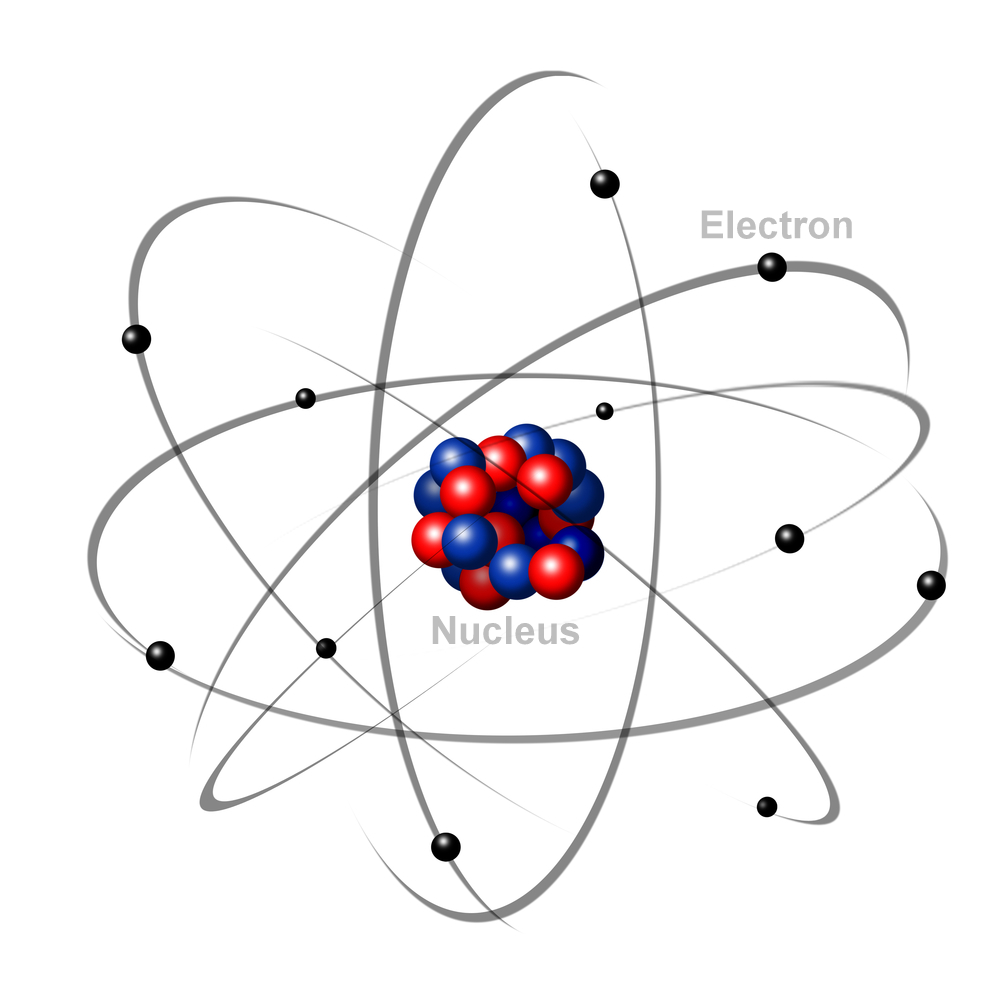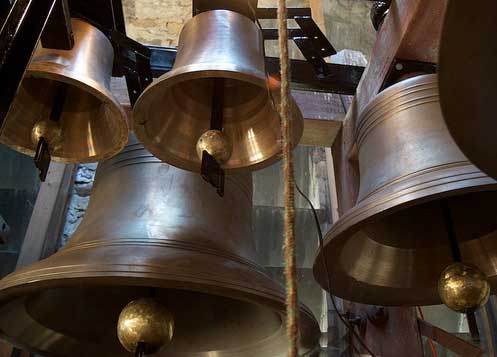Physicist: This is a bit of a misnomer.
When we picture an atom we usually picture the “Bohr model”: a nucleus made of a bunch of particles packed together (protons and neutrons) with other particles zipping around it (electrons). In this picture, if you make a guess about of the size of electrons and calculate how far they are from the nucleus, then you get that weird result about atoms being mostly empty. But that guess is surprisingly hard to make. The “classical electron radius” is an upper-limit guess based on the electron being nothing more than it’s own electric field, but it’s ultimately just a gross estimate.

The picture gives you an idea of more or less where things can be found in an atom, but does a terrible job conveying what those things are actually like.
However, electrons aren’t really particles (which is why it’s impossible to actually specify their size); they’re waves. Instead of being in a particular place, they’re kinda “smeared out”. If you ring a bell, you can say that there is a vibration in that bell but you can’t say where exactly that vibration is: it’s a wave that’s spread out all over the bell. Parts of the bell will be vibrating more, and parts may not be vibrating at all. Electrons are more like the “ringing” of the bell and less like a fly buzzing around the bell.
Just to be clear, this is a metaphor: atoms are not tiny bells. The math that describes the “quantum wave function” of electrons in atoms and the math that describes vibrations in a bell have some things in common.
So, the space in atoms isn’t empty. A more accurate thing to say is that the overwhelming majority of the matter in an atom is concentrated in the nucleus, which is tiny compared to the region where the electrons are found. However, even in the nucleus the same “problem” crops up; protons and neutrons are just “the ringing of bells” and aren’t simply particles either. The question “where exactly is this electron/proton/whatever?” isn’t merely difficult to answer, the question genuinely doesn’t have an answer. In quantum physics things tend spread out between a lot of states (in this case those different states include different positions).
The atom picture is from here.








24 Responses to Q: If atoms are 99.99% space, what “kind” of space is it? Is it empty vacuum?